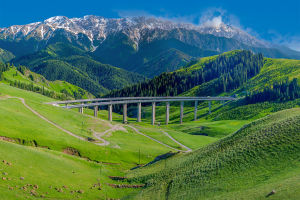The Gran Telescopio CANARIAS (GTC) is a groundbreaking Spanish initiative aimed at creating and operating one of the largest and most advanced telescopes in the world.
Led by the Instituto de Astrofísica de Canarias (IAC), the telescope's First Light Ceremony took place on the morning of July 14, 2007.
Scientific observations officially began in March 2009, after the telescope’s optics and control systems were fully developed, and the first science instrument, OSIRIS, was installed.
The scientific operational phase of the Gran Telescopio CANARIAS (GTC) marked the culmination of over a decade of design and development work. Construction began in 2000 at the Observatorio del Roque de Los Muchachos on La Palma, a site chosen for its exceptional observing conditions. Along with the Observatorio del Teide in Tenerife, it forms the European Northern Observatory (ENO), renowned for its clear skies and legal protections against light pollution.
In 1994, GRANTECAN, S.A., a public limited company, was founded to design and build the GTC. The project received support from both the Canary Islands' local government and the Spanish government. Internationally, the GTC gained recognition through partnerships with Mexico's Universidad Nacional Autónoma de México and Instituto Nacional de Astrofísica, Óptica y Electrónica, as well as with the University of Florida in the United States.
The GTC’s primary goal is to enable groundbreaking scientific research. As the largest telescope in the world, located at the Roque de los Muchachos Observatory, it will help answer some of the most pressing questions in astrophysics. This includes studying black holes, the early formation of stars and galaxies, the physics of exoplanets, and the mysteries of dark matter and dark energy in the universe.
What is the GTC?
The Gran Telescopio CANARIAS (GTC) is currently the largest and one of the most advanced optical and infrared telescopes in the world. Its primary mirror is made up of 36 hexagonal segments that work together as a single, large mirror. The total light-collecting surface area of the GTC is equivalent to a monolithic mirror with a diameter of 10.4 meters. With its vast collecting area and cutting-edge engineering, the GTC ranks among the top telescopes for astronomical research.
In addition to the primary mirror, the GTC has a secondary and tertiary mirror, which, together with the primary mirror, focus light onto the telescope's focal plane. Scientific instruments at the focal station then analyze and store the collected data.
The telescope is mounted on a large mechanical steel structure that allows precise rotational movement along horizontal and vertical axes. This movement must be incredibly accurate to ensure the stars stay focused on the detector. The GTC is designed to observe both optical and infrared light.
As the final telescope in the 8 to 10-meter class generation, the GTC has incorporated improvements based on the lessons learned from its predecessors. Its light-collecting surface spans 75.7 square meters (73 m² of effective area), making it the largest in its class. This vast surface area, combined with the telescope's remarkable image quality, enables it to fully exploit the excellent sky conditions at its location.
The GTC achieves its superb image quality through active optics, which allows for the precise adjustment of the primary mirror segments and the secondary mirror. These adjustments ensure the mirrors are always optimally aligned, regardless of external factors like weather, temperature, or mechanical issues.
Looking ahead, the GTC will also incorporate adaptive optics, a technique that compensates for atmospheric turbulence. This will allow the telescope to deliver even sharper images by applying real-time corrections—up to 1,000 times per second—using a deformable mirror. This advanced technology is crucial for overcoming the atmospheric distortion that affects all large telescopes, and it will open new possibilities for scientific discovery by significantly enhancing imaging performance.
GREAT CANARY TELESCOPE DOMSOBREIRO 10.3K subscribers
Video by DOMSOBREIRO


